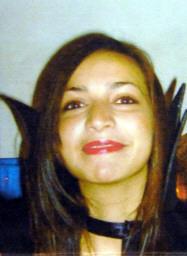A British university exchange student murdered here last November was not raped before her death, according to the chief medical examiner in the case.
In his official report, Dr. Luca Lalli said he did not find ''external traumatic signs which would indicate carnal abuse''.
However, the coroner did not rule out the possibility that 22-year-old Meredith Kercher may have been coerced into having intercourse against her will.
Based on the autopsy and evidence gathered by forensic experts, Dr. Lalli concluded that ''a sexual act did take place or was attempted'' during a period ranging from ''several minutes to several hours before the time of death''.
In regard to the time of death, the coroner concluded that it took place ''no more than two to three hours after the victim's last meal''.
However, investigators do not know exactly when that took place.
The cause of death was listed as a ''combined mechanism of asphyxiation and hemorrhaging'' caused by a ''cut wound to the carotid artery''.
There was insufficient evidence from the autopsy, the coroner added, to positively identify the weapon which caused the wound to the throat.
There was also no evidence to confirm that the victim had been choked or strangled. The autopsy and toxicological tests found no presence of drugs or toxins in the victim's body, only a small amount of alcohol.
Kercher was found November 2 with her throat slashed in the house she shared in Perugia with three other girls.
Three people are currently in custody in connection with her murder: Kercher's 20-year-old American roommate Amanda Marie Knox; the roommate's 24-year old Italian boyfriend Raffaele Sollecito; and 21-year-old Ivory Coast national Rudy Hermann Guede.
Although investigators admit they remain in the dark in regards to the motive, they claim the forensic evidence they have gathered so far against the three suspects is rock solid.
This evidence is said to include Sollecito's DNA on the victim's bra, which police say definitively placed him at the scene of the crime.
The DNA was found on a small piece of cloth cut by a knife close to the bra's fastener.
Guede's DNA was found in the toilet at the murder scene and in a vaginal swab of the victim.
He also left a bloody fingerprint on Kercher's pillow.
Forensic tests also identified Guede's DNA on the victim's purse, which had been on her bed, as well as on the cuff of her running suit.
Guede, as opposed to Knox and Sollecito, has admitted being at the scene of the crime but denies any involvement.
Other forensic evidence includes a large kitchen knife found in Sollecito's kitchen which had the victim's DNA on the blade and Knox's DNA on the handle.
DNA belonging to both Knox and Kercher were also identified in a drop of blood found in the victim's bathroom.
Police also have a footprint left in Kercher's blood which matched the size and make of sneakers owned by Sollecito.
However, no traces of blood have been found on his sneakers.
In an 18-page preliminary report released in December, police said their investigation and the evidence gathered ''proved a direct relationship between the suspects and the victim and the presence of the suspects in the apartment at the time of the attack on Meredith''.
Guede claims he was in the bathroom at the time of the murder and that when he came out he saw the murderer, who tried to attack him.
Although this hypothesis has not been ruled out, a preliminary hearings judge denied him bail on the grounds that his testimony was''contradictory, incomplete, unlikely and illogical''.
Similar arguments were used to deny bail to Knox and Sollecito at the end of November.













